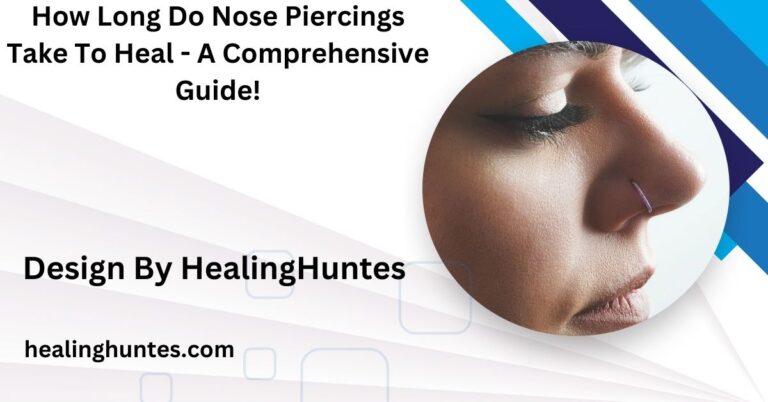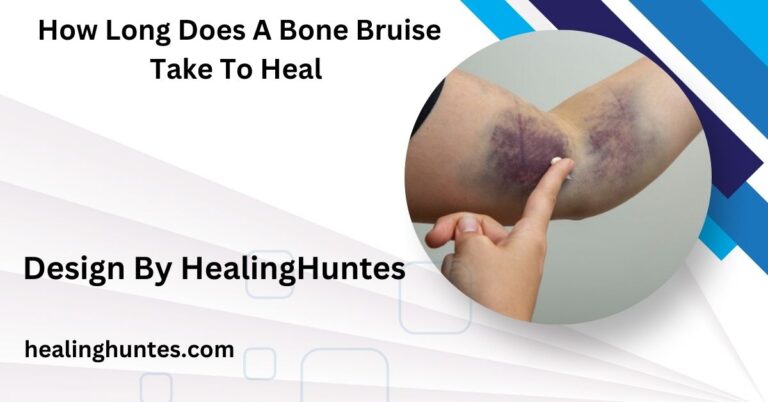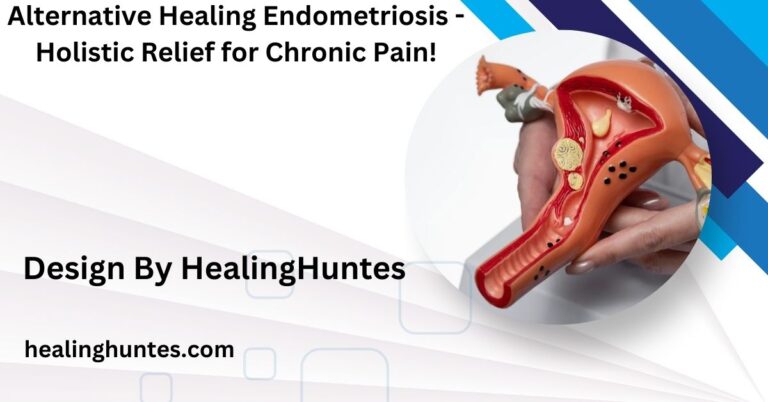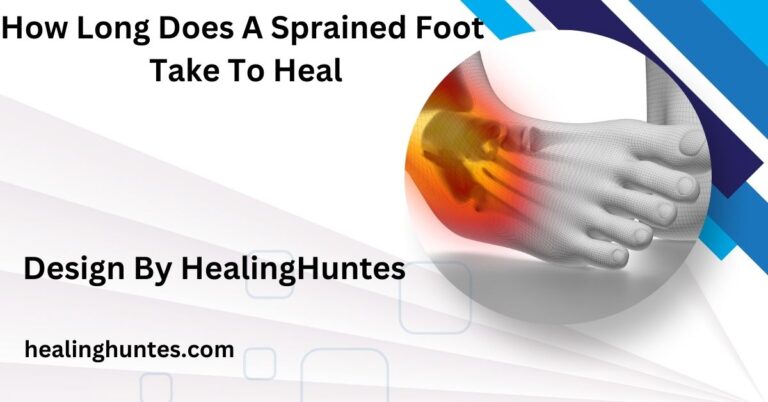How Long Does It take A Muscle Strain To Heal – Healing Muscle Strains Quickly!
Muscle strain healing time depends on the severity. Mild strains typically heal in 3 to 7 days, moderate strains take 3 to 6 weeks, and severe strains may take 2 to 6 months.
In this comprehensive guide, we’ll take a closer look at the healing process, factors influencing recovery time, and practical steps to ensure faster healing.
What is a Muscle Strain?

A muscle strain, commonly referred to as a pulled muscle, occurs when a muscle is overstretched or torn. The injury can happen when a muscle is forced to work beyond its capacity or when an unexpected force is applied. For example, lifting something too heavy or a sudden, jerky motion during physical activity can result in muscle strain.
There are three grades of muscle strains, each varying in severity:
- Grade 1 (Mild): This is a mild strain, where the muscle fibers are overstretched or slightly torn. The pain is usually minimal, and the muscle still functions fairly well. Most people can continue their activities with slight discomfort but might experience mild swelling.
- Grade 2 (Moderate): This strain involves partial muscle tearing, causing more significant pain, swelling, and some loss of function. It may be difficult to use the affected muscle, and rest is required to allow it to heal properly.
- Grade 3 (Severe): A severe strain is the complete rupture of the muscle or tendon. This type of injury often requires immediate medical attention and can take a long time to heal. In some cases, surgery may be necessary to repair the damage.
How Long Does It Take a Muscle Strain to Heal?
The recovery time for a muscle strain depends largely on the severity of the injury. Each grade of strain requires a different level of care and healing time. Here’s a general timeline for muscle strain recovery:
- Grade 1 Strain (Mild): Healing from a Grade 1 strain typically takes about 3 to 7 days. While the injury may cause mild discomfort, most people can manage the pain with over-the-counter medications, rest, and ice. The muscle usually heals quickly, and individuals can resume normal activities without significant restrictions.
- Grade 2 Strain (Moderate): A moderate strain generally requires 3 to 6 weeks to heal. This depends on the individual’s overall health, the muscle involved, and how well they follow the recommended recovery plan. The pain and swelling may take a few weeks to subside, but with appropriate treatment, the muscle should regain full function after several weeks.
- Grade 3 Strain (Severe): Severe strains can take several months to fully heal. Recovery times can vary widely, from 2 to 6 months, depending on the severity of the tear and the type of treatment required. In some cases, surgery may be necessary to reattach torn muscles or tendons, which will extend the recovery period. Rehabilitation therapy is often required to restore strength and flexibility.
Factors That Affect Muscle Strain Healing Time:
While the grade of the strain plays the most significant role in determining recovery time, several other factors can influence how long it takes to heal:
Also Read: Eparation Of Tissue Margins During The Healing Process Is Called – Key Mechanisms Explained!
Age:
- Younger individuals typically heal faster than older adults. As we age, our muscles lose elasticity, and tissue regeneration slows down. Older individuals might need more time to recover from muscle strains due to age-related changes in muscle and tendon flexibility.
Overall Health:
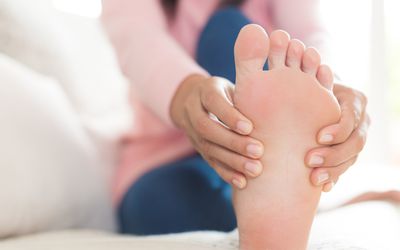
- If you have a pre-existing medical condition such as diabetes, poor circulation, or an immune system disorder, healing may be delayed. In contrast, individuals who are in good overall health tend to recover more quickly as their body can repair tissue more efficiently.
Severity of the Strain:
- A mild strain will naturally heal faster than a moderate or severe strain. The greater the muscle damage, the longer it will take for your body to regenerate and repair the muscle fibers.
Treatment:
- Early and effective treatment is essential for healing. Rest, ice, compression, and elevation (the R.I.C.E. method) are often used in the initial stages of treatment. Delaying or neglecting proper care can prolong recovery time. If you don’t follow the recommended treatment, it can lead to complications such as chronic muscle weakness or re-injury.
Rest and Activity Level:
- Rest is one of the most critical factors in healing a muscle strain. Giving your body time to repair itself is essential, but it’s also important to balance rest with movement as directed by a healthcare provider. Too much immobility can slow recovery, while too much activity too soon can worsen the injury.
Also Read: How Do You Heal A Cut Tongue – Step-by-Step Healing Guide!
Nutrition:
- Proper nutrition is key for muscle recovery. Adequate protein intake, vitamins, and minerals like Vitamin C and zinc help your body rebuild muscle fibers. Hydration is also essential to prevent muscle stiffness and promote tissue repair.
How to Speed Up Recovery from a Muscle Strain?
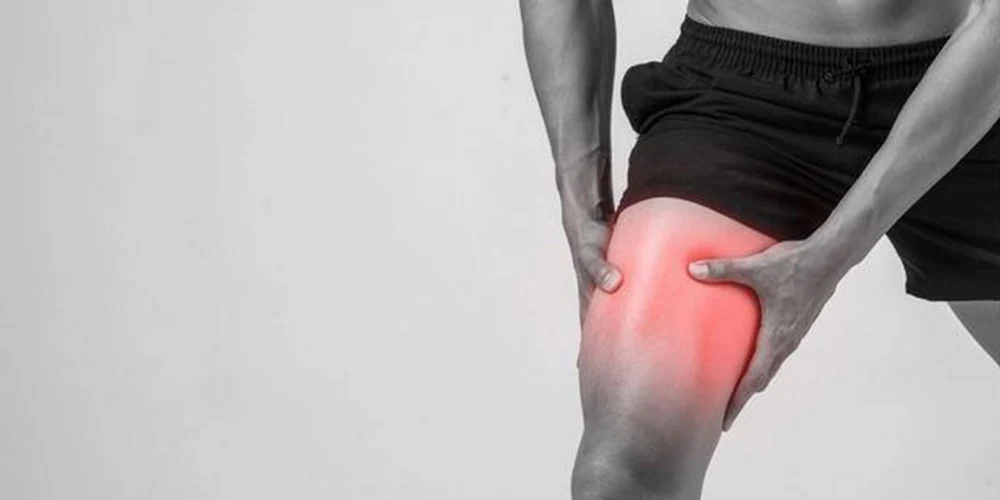
To recover faster from a muscle strain, follow these essential steps:
Rest and Protect the Injured Muscle:
- Avoid activities that aggravate the strain. If necessary, use a brace or support to protect the muscle from further damage.
Ice the Muscle in the First 48 Hours:
- Applying ice to the injured area can help reduce swelling and numb the pain. Ice the muscle for 15-20 minutes every 2 to 3 hours during the first 48 hours after the injury. This helps constrict blood vessels, which reduces swelling and inflammation.
Compression and Elevation:
- Use an elastic bandage or compression wrap to help manage swelling. Elevating the affected limb can also reduce swelling and help fluid drain from the injured area.
Also Read: Eparation Of Tissue Margins During The Healing Process Is Called – Key Mechanisms Explained!
Heat Therapy (After 48 Hours):
- After the first two days of using ice, heat therapy can be helpful to relax and loosen up the muscle. Applying a heating pad or warm towel for 15-20 minutes can stimulate blood flow, which aids in the healing process.
Gentle Stretching and Strengthening:
- Once the acute pain has subsided, start with gentle stretching and strengthening exercises to rebuild flexibility and strength. A physical therapist can help guide you with specific exercises tailored to your injury and prevent further damage.
Nonsteroidal Anti-inflammatory Drugs (NSAIDs):

- Over-the-counter NSAIDs like ibuprofen or naproxen can reduce pain and inflammation. However, use them as directed and only for short-term relief. Prolonged use can interfere with muscle healing.
Physical Therapy:
- For moderate to severe strains, physical therapy is highly recommended. A physical therapist can help you restore full muscle function through tailored exercises that promote strength, flexibility, and coordination.
Avoid Premature Activity:
- While it’s tempting to resume regular activities, avoid putting too much strain on the affected muscle too soon. This can increase the risk of reinjury or a more severe tear. Gradually reintroduce physical activity only once you’re pain-free and have regained full movement.
Also Read: Is It True That Your Mouth Heals Faster – Faster Mouth Recovery!
When to Seek Medical Help?
If the muscle strain doesn’t improve with at-home care, or if you experience symptoms such as severe pain, swelling, bruising, or the inability to move the muscle, seek medical attention immediately. If you suspect a Grade 3 strain or muscle tear, it’s crucial to consult a doctor who may recommend imaging tests (like an MRI) to assess the extent of the injury. A healthcare professional can also recommend a personalized treatment plan, which may include surgery or rehabilitation therapy.
FAQ’s
- How long does it take to heal a mild muscle strain?
Mild muscle strains generally heal in 3 to 7 days with proper care like rest, ice, and over-the-counter medication.
- What factors affect the recovery time of a muscle strain?
Recovery time is influenced by factors such as age, overall health, severity of the strain, treatment approach, and activity levels.
- When should I see a doctor for a muscle strain?
If the strain is severe, there’s significant pain, swelling, bruising, or difficulty moving the muscle, seek medical attention.
- How can I speed up muscle strain recovery?
Rest, ice, compression, elevation, heat therapy (after 48 hours), and physical therapy can help speed up recovery.
- Is physical therapy necessary for muscle strain recovery?
Physical therapy is highly recommended for moderate to severe strains to restore strength, flexibility, and full muscle function.
Conclusion
The healing time for a muscle strain depends on its severity. Mild strains heal within a week, moderate strains require 3 to 6 weeks, and severe strains may take months. Age, health, and treatment affect recovery time. Rest, proper care, and rehabilitation help speed healing and prevent reinjury, enabling a quicker return to daily activities.

